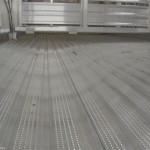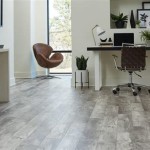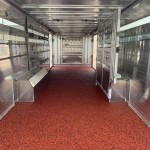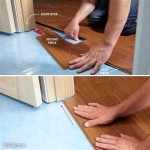Garage Flooring Paint: A Comprehensive Guide
Garage flooring paint provides a protective and aesthetically pleasing coating for concrete garage floors. It serves multiple purposes, including protecting the concrete from damage caused by chemicals, oil spills, and abrasion, as well as enhancing the overall appearance of the garage space. Selecting the appropriate type of garage flooring paint is crucial for achieving long-lasting results and ensuring the floor can withstand the demands of a garage environment.
The decision to paint a garage floor often stems from the desire to improve its durability and appearance. Untreated concrete is porous and susceptible to staining, cracking, and crumbling. Paint provides a barrier against these issues, extending the lifespan of the concrete and reducing the need for costly repairs. Furthermore, a well-painted garage floor can transform a dull and uninviting space into a clean and organized area.
This article will delve into the different types of garage flooring paint available, the preparation required before application, the application process itself, and the maintenance necessary to keep the painted surface in optimal condition. Understanding these aspects is essential for a successful garage floor painting project.
Types of Garage Flooring Paint
Several types of paint are suitable for garage floors, each offering distinct properties and benefits. The most common types include epoxy paint, acrylic latex paint, and polyurethane coatings. Understanding their compositions and performance characteristics is vital for making an informed decision.
Epoxy Paint: Epoxy paint is a two-part coating consisting of a resin and a hardener. When mixed, these components create a chemical reaction that results in a durable, chemical-resistant, and abrasion-resistant surface. Epoxy coatings are known for their superior adhesion and ability to withstand heavy traffic and spills, making them a popular choice for garage floors. They also offer excellent gloss retention and can be tinted to a wide range of colors. However, epoxy paint can be more expensive than other options and requires careful mixing and application to ensure proper curing.
There are different types of epoxy coatings, including water-based epoxy and solvent-based epoxy. Water-based epoxy is easier to clean up and has lower VOC (volatile organic compound) emissions, making it a more environmentally friendly option. Solvent-based epoxy, on the other hand, typically offers superior durability and chemical resistance. The choice between the two depends on the specific needs and priorities of the project.
Acrylic Latex Paint: Acrylic latex paint is a single-component coating that is easier to apply and less expensive than epoxy. It provides a decent level of protection against stains and spills but is not as durable or chemical-resistant as epoxy. Acrylic latex paint is a good option for lighter-duty garages or for those on a tighter budget. It also dries relatively quickly and is available in a wide variety of colors and finishes.
To enhance the durability of acrylic latex paint on a garage floor, it is recommended to use a primer specifically designed for concrete surfaces. The primer helps to improve adhesion and create a more uniform surface for the paint. Additionally, applying multiple coats of paint can further increase the protection and longevity of the coating.
Polyurethane Coatings: Polyurethane coatings offer excellent abrasion resistance and UV stability, making them suitable for garages that receive a lot of sunlight. They are typically used as a topcoat over epoxy to provide added protection and enhance the finish. Polyurethane coatings are also resistant to scratches and scuffs, helping to maintain the appearance of the floor over time. However, they can be more expensive than other options and may require specialized equipment for application.
The selection of the appropriate type of coating hinges on the intended use of the garage, the expected level of traffic, and the budget constraints of the project. Epoxy is generally the preferred choice for high-traffic garages that require superior durability and chemical resistance, while acrylic latex paint may suffice for lighter-duty applications. Polyurethane coatings are best suited for situations where UV stability and abrasion resistance are paramount.
Surface Preparation for Garage Floor Paint
Proper surface preparation is critical for ensuring the adhesion and longevity of garage floor paint. Neglecting this step can lead to premature peeling, chipping, and other coating failures. The preparation process typically involves cleaning, etching, and repairing the concrete surface.
Cleaning: The first step in surface preparation is to thoroughly clean the concrete floor. This involves removing any dirt, dust, oil, grease, and other contaminants that may interfere with the adhesion of the paint. A pressure washer with a degreasing solution can be used to effectively remove stubborn stains and grime. Alternatively, a scrub brush and a concrete cleaner can be used for smaller areas. It is important to rinse the floor thoroughly after cleaning to remove any residual cleaning agents.
After the initial cleaning, it is crucial to inspect the floor for any signs of mold or mildew. If present, these areas should be treated with a mold and mildew remover before proceeding. Allowing the floor to dry completely after cleaning is essential before moving on to the next step.
Etching: Etching the concrete surface is necessary to create a porous profile that allows the paint to adhere properly. This can be achieved using muriatic acid or a concrete etching solution. Muriatic acid is a strong acid that can be dangerous to handle, so it is important to wear appropriate protective gear, including gloves, goggles, and a respirator, when using it. The etching solution should be applied according to the manufacturer's instructions, typically involving diluting the acid with water and applying it to the floor with a sprayer or brush. The etching process will create a slight fizzing or bubbling effect as the acid reacts with the concrete.
After the etching process is complete, the floor should be thoroughly rinsed with water to remove any residual acid. It is important to neutralize the acid before applying the paint, as any remaining acid can interfere with the adhesion and curing of the coating. A solution of baking soda and water can be used to neutralize the acid.
Repairing: Before applying the paint, it is important to repair any cracks, holes, or other imperfections in the concrete surface. These imperfections can be filled with a concrete patching compound or epoxy filler. The patching compound should be applied according to the manufacturer's instructions and allowed to dry completely before sanding smooth. Sanding the repaired areas will create a uniform surface for the paint and ensure a more professional finish.
In addition to repairing cracks and holes, it is also important to remove any loose or flaking concrete. This can be done with a wire brush or a scraper. Removing loose concrete will prevent it from interfering with the adhesion of the paint.
After completing the cleaning, etching, and repairing steps, the floor should be vacuumed thoroughly to remove any remaining dust or debris. The floor should then be allowed to dry completely before applying the primer or paint. Proper surface preparation is a time-consuming process, but it is essential for achieving a long-lasting and durable garage floor coating.
Application of Garage Flooring Paint
The application process for garage flooring paint requires careful attention to detail to ensure a smooth, even, and durable finish. The steps involved typically include priming, mixing (for two-part epoxies), and applying the paint in thin, even coats.
Priming: Applying a primer specifically designed for concrete floors is highly recommended, especially for acrylic latex paints. The primer helps to improve adhesion, seal the concrete surface, and create a more uniform base for the paint. The primer should be applied according to the manufacturer's instructions, typically using a roller or brush. It is important to allow the primer to dry completely before applying the paint.
Choosing the right primer is important. For epoxy paints, a two-part epoxy primer is often recommended to ensure compatibility and maximum adhesion. For acrylic latex paints, an acrylic latex primer designed for concrete surfaces is typically sufficient.
Mixing (for Two-Part Epoxies): For two-part epoxy paints, it is crucial to mix the resin and hardener components thoroughly according to the manufacturer's instructions. The mixing process is often time-sensitive, as the mixture will begin to cure once the components are combined. Using a drill with a mixing attachment can help to ensure that the components are thoroughly blended. Improper mixing can result in a coating that does not cure properly and is prone to peeling and chipping.
It is important to use the correct ratio of resin to hardener, as specified by the manufacturer. Using too much or too little of either component can affect the properties of the cured coating. It is also important to work in a well-ventilated area when mixing epoxy paints, as the fumes can be irritating.
Applying the Paint: The paint should be applied in thin, even coats using a roller or brush. Applying too much paint in a single coat can lead to runs, drips, and uneven drying. It is better to apply multiple thin coats than one thick coat. The first coat should be allowed to dry completely before applying the second coat. The drying time will vary depending on the type of paint and the ambient temperature and humidity.
When using a roller, it is important to use a roller cover that is specifically designed for epoxy or concrete coatings. A high-quality roller cover will help to ensure a smooth and even finish. When using a brush, it is important to use a brush that is compatible with the type of paint being used.
For optimal results, it is recommended to apply two coats of paint. The second coat will provide additional protection and improve the appearance of the floor. After applying the final coat, the floor should be allowed to cure completely before being subjected to traffic or heavy loads. The curing time will vary depending on the type of paint and the ambient conditions.
During the application process, it is important to maintain a clean and organized work area. Keeping tools and materials readily accessible will help to streamline the process and minimize the risk of errors. It is also important to wear appropriate protective gear, including gloves, eye protection, and a respirator, when working with paints and solvents.

How To Paint A Garage Floor Clean And Scentsible

Painting Your Garage Floors Do S Dont Making Pretty Spaces Blog

How To Paint Garage Floors With 1 Part Within The Grove

How To Paint A Garage Floor Clean And Scentsible

How To Paint Garage Floor Regal Paints Industrial Protective Ltd

Diy Garage Floor Coating

Guide To Garage Floor Paint Coating

How To Use Garage Floor Paint Transform Your Home

Garage Floor Coating Everything You Need To Know 2024 Advance Industrial Coatings

Difference Between Garage Floor Paint And
Related Posts








